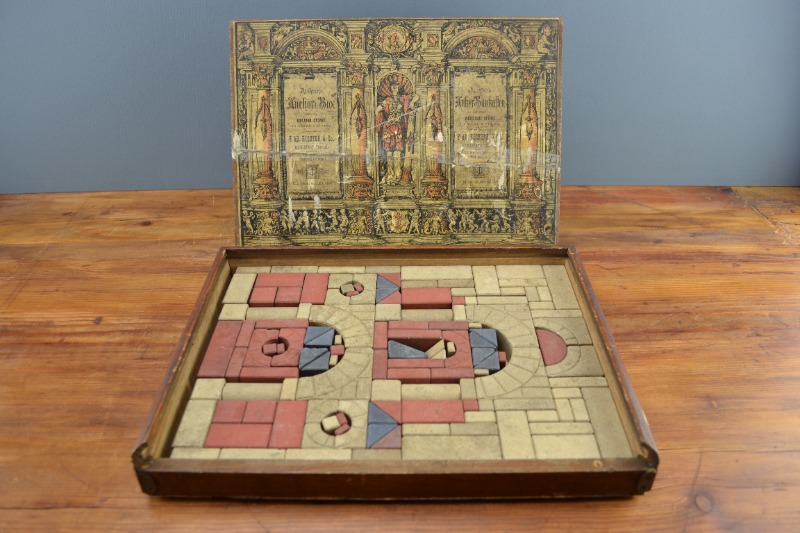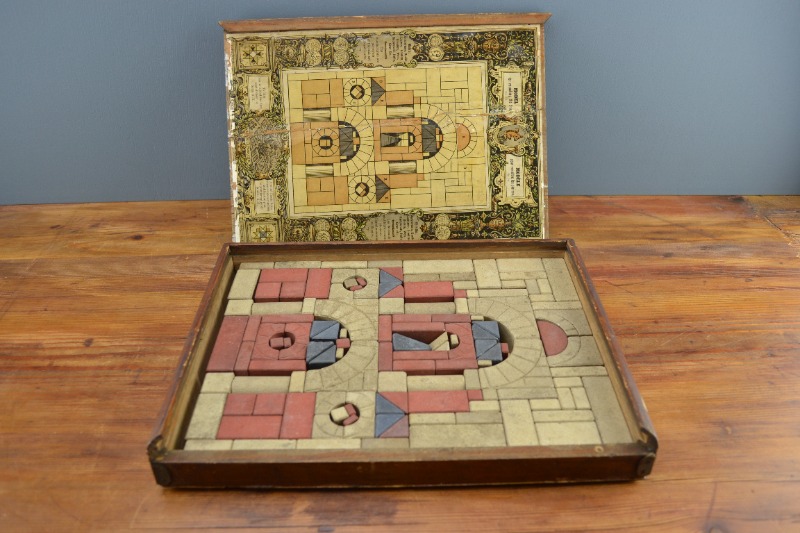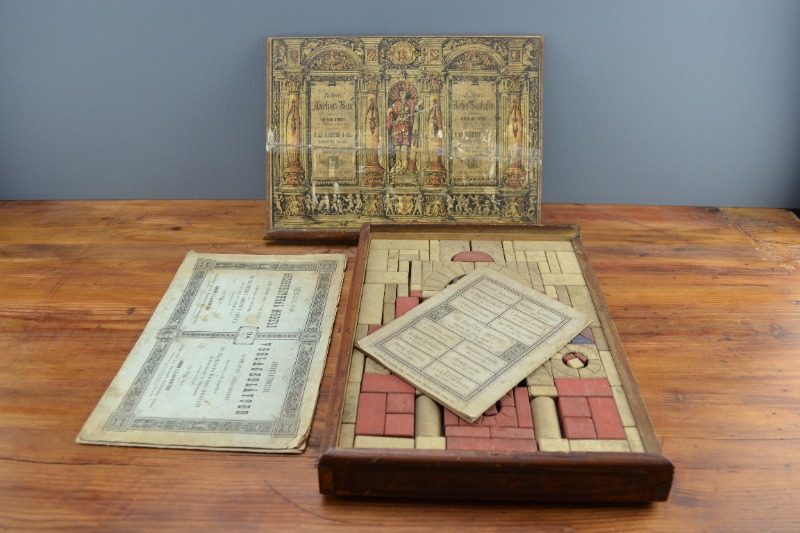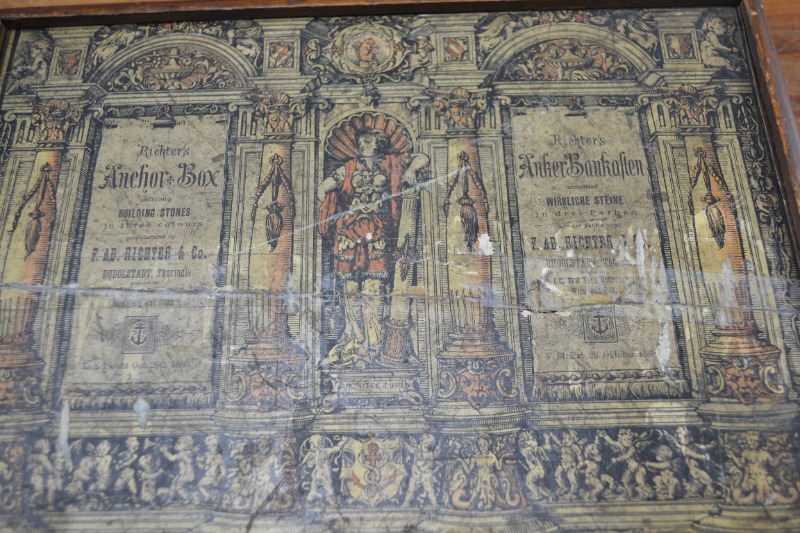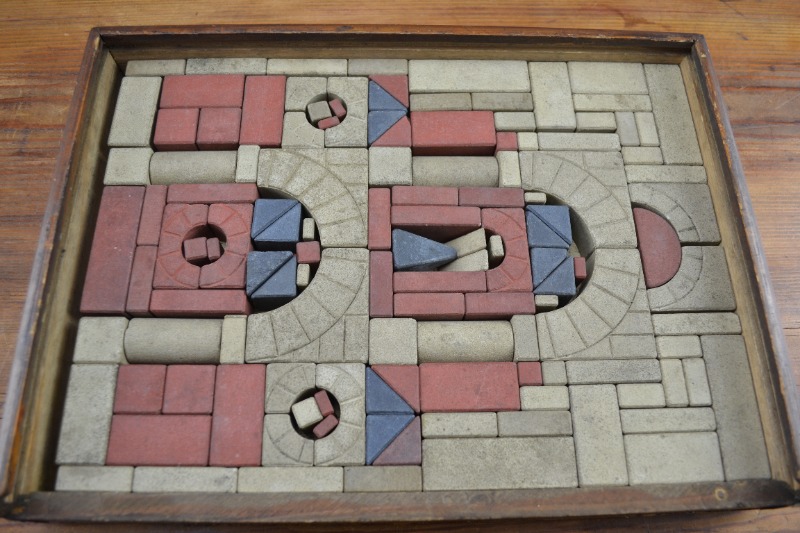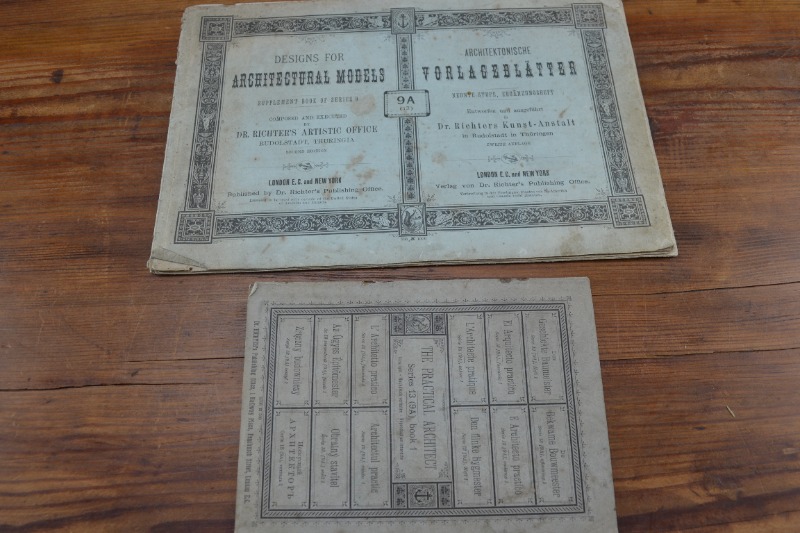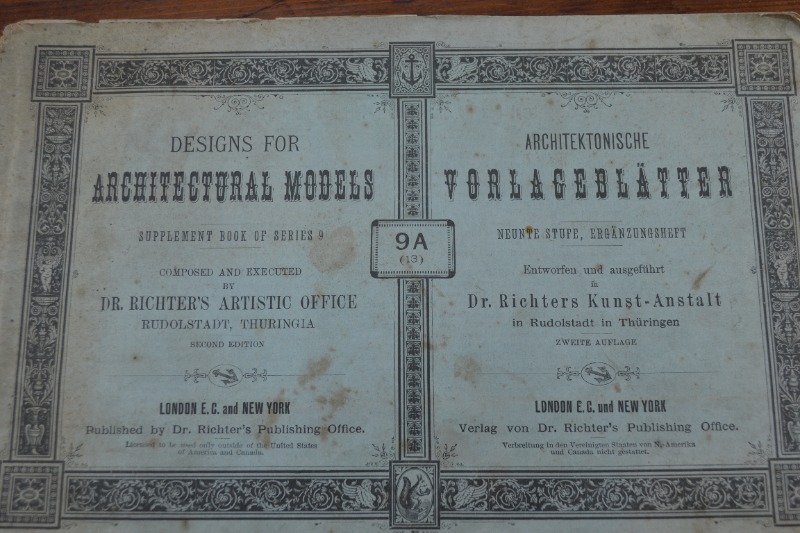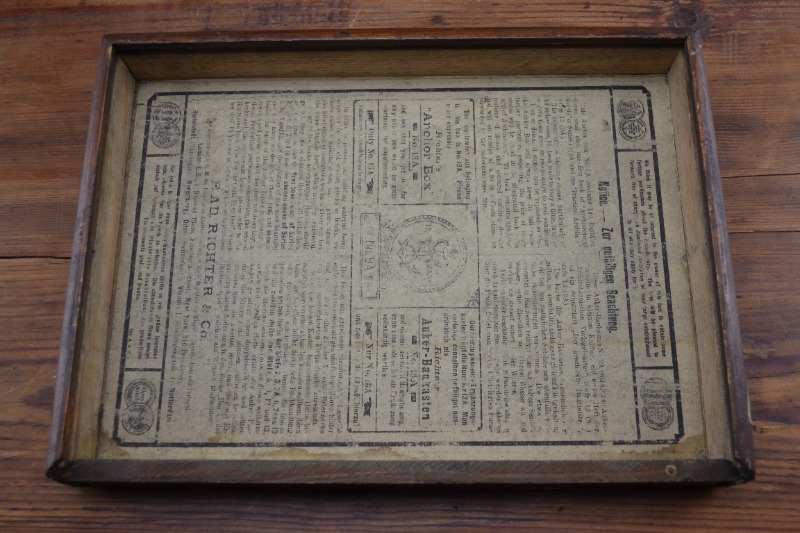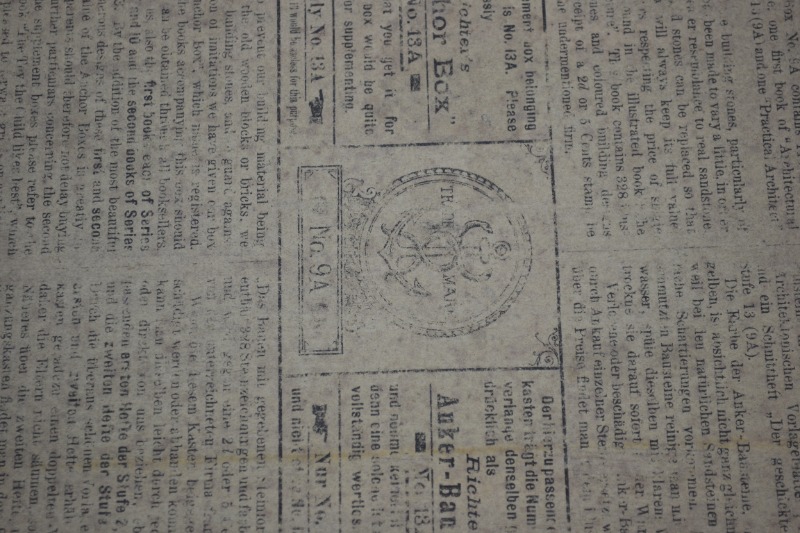Victorian Richter’s Anchor Stones (Small) No. 9A with Architectural Model Book, 1887
Age:
1887
Material:
Dimensions:
30.5cm x 22.5cm
Shipping:
Standard Parcel
Price:
SOLD
A set of building blocks by F. Ad. Richter & Co, No. 9A, in a wooden box with slide-out lid. The lid has a classical design by the Nuremberg architect C. Walther with the firm’s early trademark of a squirrel. In English and German, the lid is titled ‘Richter’s Anchor Box containing building stones in three colours’. Manufactured in Rudolstadt, Germany, the box declares branches in London, New York, Rotterdam, Nuremberg and Oltan. Beneath this is an early anchor mark with the US patent date of 26 October 1880. The inside of the lid shows the model for repacking the stones with a list of prize medals down the side and ‘purveyors of Imperial and Royal Courts.’ The base of the box has information on how to order further stones, offering an illustrated catalogue free of charge. It states the firm is ‘By appointment to H.M. the Emperor of Austria-Hungary, to Their Majesties the Kings of Bavaria, Italy and Portugal.’
The box comes with an accompanying booklet ‘The Practical Architect’ showing architectural models that can be made with the blocks. It was published in 13 languages by Dr Richter’s Publishing Office, Fenchurch St, London. The booklet is dated on the first page March 1887 (873). A supplement model book from May 1888 (885 in a print run of 1500) is also there. Titled ‘Designs for Architectural Models’ , this was ‘composed and executed by Dr Richter’s Artistic Office , Rudolstadt, Thuringia’. This has London and New York on it but was ‘licensed to be used only outside of the United States of America and Canada’.
The box has all its original stones. A few of them have worn corners but are essentially in good condition with no breaks. The box lid has a break down the middle with a tape repair. The lid and the model books are age-stained and worn with some loose pages to the ‘Designs for Architectural Models’ booklet. However, the coloured designs inside are in reasonable, usable condition.
These building blocks were originally designed by the artist Gustav Lilienthal for the educationalist Dr Georgen. With his brother, he invented an artificial stone made out of quartz sand, chalk and linseed oil, which were heavier and with a rougher surface so that they did not fall over so easily. Lacking in marketing skills, the brothers sold their idea to Friedrich Adolf Richter in 1880. Richter immediately expanded his factory complex in Rudolstadt and engaged famous artists, illustrators and architects to work on his project. In 1884 he offered a complete series of building stones for sale. He already had a publishing house in Leipzig producing educational material and used it to pursue a concerted advertising campaign. He entered his stones into numerous competitions and boasted in his 1885 catalogue 15 gold, 6 silver and three bronze medals. By spring 1886, his catalogue listed 175 unique stones in the larger 2.5 cm size und 63 smaller (2cm) stones. This catalogue was available in 13 languages. In 1895 he trademarked the design as "Richter‘s Anchor Stone Building Sets". The boxes of stones were designed to be accumulative. So, for instance, adding box No. 9A to No. 9 provided the same stones as the two-tier box No. 13.

